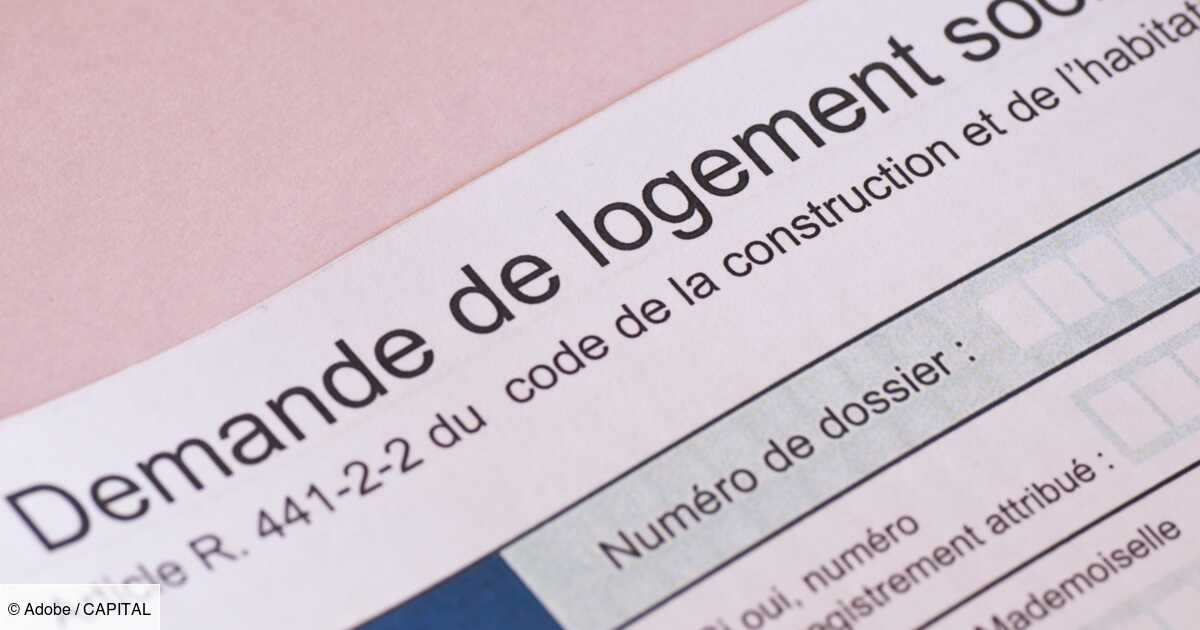In a report published on April 28, the ANCOLS notes “an increasing inadequacy between the supply and demand for social housing, resulting in a lengthening of waiting times and a progressive saturation of the system”.
© Adobe
– The number of social housing requests increased by almost 5% in 2024 as is the case each year since 2020, to more than four million.
The 2.7 million French people awaiting social housing must be patient. In 2024, only 384,000 social housing have been awarded to households, a drop of 2.3% compared to 2023, indicates the National Agency for Social Housing Control (ANCOLS), this Monday, April 28, during a press conference. “This result corresponds to that of the year 2020, marked by the impact of the COVVI-19 (on the construction of HLM, with the interruption of construction sites, note), making a result obtained in a context of health crisis a new standard”underlines the ancols. At the same time, the number of requests for social housing increased by almost 5% last year, as is the case each year since 2020, in more than four million. Mechanically, the HLM allocation rate fell to 9.4% In 2024, against 10.1% in 2023.
“The attribution rate reaches a historically low level, passing For the first time below 10 %»»highlights the ancols. Decreasing 0.7 points compared to 2023, this ratio has plunged 5.8 points since 2016, when it exceeded 15%. It must be said “That in almost 10 years, the number of powers has decreased by more than 20%, or 100,000 dwellings allocated less compared to 2016”according to the agency. This decrease has accelerated from the 2020 health crisis, with a drop in the number of attributions of 20,000 per year on average Between 2021 and 2023, against around 11,000 per year between 2016 and 2019.
Housing tax: what could the “modest contribution” to public services might look like?
Decrease in the rotation and construction of social housing
With 9,000 less attributions, the drop was less marked in 2024, however, than in 2023 and 2022, when they had dropped 25,000 and 18,000 respectively. But but “It is still too early to conclude that structural stabilization” The number of HLM attributions, estimates the ancols. According to her, the decrease in the volume of attributions in recent years results from the Household mobility decreases within the social park and the regular decline in the construction of HLM. “Rotation (relationship between the number of signs in the year and all existing dwellings, editor’s note) represents 80% to 85% of the supply of social housing”recalls Baptiste Prestel, director of transversal studies of the Ancols.
However, the “turnover” of the social park only represents 8.1% against 9.8% in 2018. Baptiste Prestel sees in this drop in rotation “No doubt the difficulty of accessing property and the private rental market”after two and a half years of a real estate crisis caused by the outbreak of credit rates, which forced many households to give up their purchasing project and remain tenants. As for the number of HLM “commissioned “it was reduced from 75,000 in 2018 to 63,000 in 2023, in the context of a Housing supply crisis which has lasted since 2017, many mayors being reluctant to issue building permits, in particular to combat the artificialization of soil.
Real estate: zero taxation and no risk of renting for rent with this little -known investment
A congestion form of the HLM attribution system
Ancols therefore notes “A growing inadequacy between supply and demand for social housing, resulting in extension of waiting times and a progressive saturation of the system ”. Many households therefore maintain their request for social housing for several years. The rate of renewal of demand after a year thus reached 49 % in 2024, or 8 points more than in 2016. In the same way, after two years, 70 % of requests are renewed, an increase of more than seven points since 2016. Which “Confirms a form of congestion of the attribution system”insists the ancols.
Among the different socio-professional categories, employees remain the most numerous, representing at least 40.4% of HLM requests. Their allocation rate, although slightly drops to 10.7% in 2024 (-0.9 point), remains the highest compared to other socio-professional categories. The unemployed encounter more difficulties, with an increase of 5.4% of their requests and a relatively low allocation rate (6.9%). The students Faced with the most marked decline in the allocation rate (-1.5 point in 2024), almost three times greater than that of applicants in unemployment.
Receive our latest news
Every week your appointment with Real estate news.











